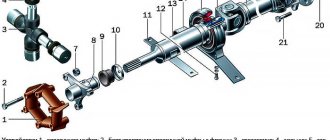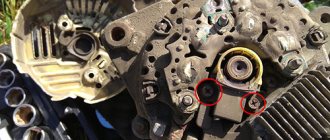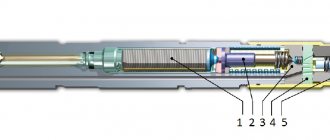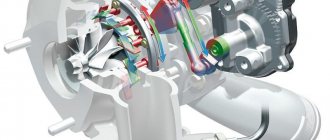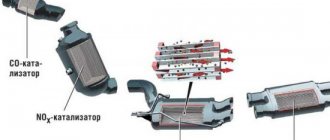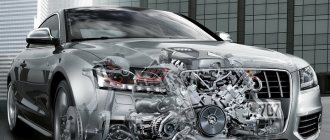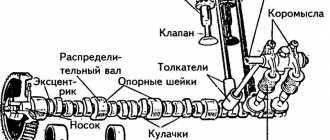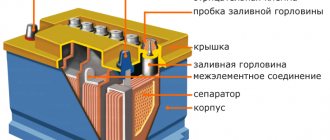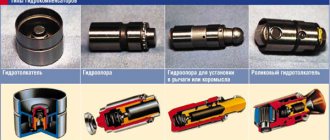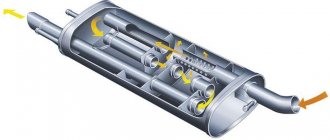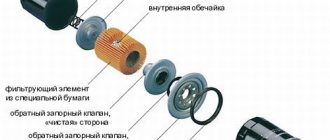Design and principle of operation
The main function of the fuel supply system is to inject fuel in certain doses under pressure.
There are two main types of nozzles:
- simple;
- electrically controlled.
In a standard diesel injector, the atomizer is the main part. It can have several holes, be adjusted in different ways and supply diesel fuel. For example, simple diesel power units are equipped with elements with a single-hole atomizer and a needle. But GDI engines are equipped with nozzles with many holes, usually from 2 to 6.
You can imagine the normal operation of injectors like this. Diesel fuel flows from the tank to the fuel injection pump under low pressure. Then the fuel injection pump sequentially pumps fuel under strong pressure to the injection elements. They open under pressure. As soon as the pressure drops, the diesel injection is also switched off.
Electrically controlled injectors are created as a result of the progress of diesel fuel systems. Here, diesel fuel is supplied to the cylinders according to the same principle, only the nozzles do not open under pressure. An electromagnetic valve controls this entire process. It is not on its own, but is controlled directly by the car's ECU. Without a corresponding signal from there, fuel does not enter the atomizer.
Electromechanical control has many advantages. Thus, in Common Rail diesel injectors, up to 7 injections can occur in one cycle, which a priori increases engine power. Thanks to high-precision distribution in such systems, the combustible mixture is uniformly dosed, atomized and burned more efficiently.
Pump-injector systems have also recently become popular. There is no fuel injection pump; each cylinder has its own nozzle.
Pump injector device
Operating principle of nozzles
Fuel is supplied to the injectors under high pressure. Next, the engine ECU sends a signal to the injector electromagnet, which is responsible for the operation of the needle valve and opens or closes the supply channel. The amount of injected fuel depends on the duration of the electric pulse.
Today there are three main types of injectors; they can be electromagnetic, electrohydraulic and piezoelectric.
An electromagnetic injector is often installed on gasoline engines. Voltage is supplied to the valve excitation winding at a strictly specified time specified in the program. It activates an electromagnet, which pulls the weight with the needle out of the valve, thus opening the nozzle. As a result, a certain portion of fuel is injected into the combustion chamber. After the voltage in the coil disappears, the needle returns to its original position.
Diesel engines are equipped with electrohydraulic injectors. They consist of a drain and intake throttle, a solenoid valve and a chamber. The supply to the cylinders is controlled by changing the fuel pressure. That is, fuel is supplied to the channel, and as soon as the pressure becomes sufficient to overcome the resistance of the spring, it will rise and injection will occur. This feature is the main difference between this mechanism and similar ones.
Piezoelectric injectors are today considered the most advanced and promising among all known. Installed exclusively on vehicles with a diesel engine and a Common Rail fuel supply system.
Symptoms of a problem
Despite extreme precision, diesel injection systems are very fragile. This is the reason for their rapid failure. This is especially true for electronic and electromechanical injectors, which cannot tolerate low-quality fuel, aggressive driving style and clogging.
The first obvious sign of a faulty injector is increased, unnatural agility of the car. The electronics incorrectly determine the dosage and overfill the fuel. This does not last long: the process takes the opposite effect. The smokiness of the exhaust increases, especially when the gas pedal is sharply applied. Oil consumption increases, into which diesel fuel begins to leak.
The second sign is unstable idle speed. The car will begin to start worse in the morning, and when warmed up, it will smoke. Competent diagnostics of diesel injectors must be carried out taking into account these factors.
Thus, the “symptomatic series” can be briefly described as follows:
- jerks and jolts while driving;
- engine idle mode is unstable;
- Excessive amounts of smoke are released from the exhaust system;
- there is a loss of traction or a sharp increase in it;
- individual cylinders fail.
How to clean and adjust diesel injectors
High-quality fuel atomization directly affects the combustion efficiency of the fuel-air mixture in the cylinder of a gasoline or diesel engine. If fuel is supplied unevenly or not at a given point in time, then the diesel engine loses power in different operating modes, the diesel exhaust becomes black, the engine begins to stall, etc. The diesel engine runs poorly and unstable when hot.
Such malfunctions in the diesel engine power system can lead to expensive repairs. Untimely supply of fuel to the cylinders leads to increased fuel consumption, overheating and destruction of the piston, burnout of valves, and failure of the particulate filter. One of the common causes of malfunctioning internal combustion engines is injection failure due to the fault of fuel injectors. To avoid such troubles, it may be necessary to diagnose, flush and/or repair diesel injectors.
Diesel engine injector pressure
The higher the pressure of diesel engine injectors, the finer the diesel fuel is sprayed. Thus, a GDI engine has an average injector pressure of 1000-2050 bar. In addition, depending on the quality of the atomizer and the fuel system, the injection time may vary - from 1 to 2 milliseconds.
Proper maintenance of a diesel engine involves, first of all, adjusting the injection start pressure. This is done on a special stand, adjusted with a screw with the nozzle cap removed and the lock nut unscrewed. The pressure will increase when screwing in the screw, and decrease when unscrewing.
Below are approximate readings of the standard pressure of various systems:
- classic injector - 400-1000 kg/cm2 flows through the fuel injection pump;
- Common Rail - up to 1600 kg/cm2 is provided through the fuel injection pump;
- pump nozzles - 1200-2050 kg/cm2.
How to extend the life of injectors
To increase the service life of the injector, it is important to periodically clean it. According to the recommendations of most experts, this should be done every 20-30 thousand kilometers. Although in practice these figures can be safely halved to 10-15 thousand. This is due to low-quality fuel, often sold at little-known gas stations. The use of low-quality fuel entails the appearance of deposits on rubbing parts, dirt in the fuel system, condensation formation, blockages in the fuel filter, corrosion, and the like. All this leads to interruptions in the operation of the power plant, increased fuel consumption and a drop in power.
Of course, this negatively affects the service life of the entire fuel system and there is no escape from it. However, timely maintenance will help prolong the operation of the injectors and avoid unnecessary waste on expensive repairs. The correct procedure for cleaning injectors, replacing fuel filters on time and refueling at proven gas stations with high-quality fuel will help to significantly extend the life of not only the injectors, but the entire engine.
Checking diesel engine injectors yourself
The usual method of diagnosing clogged injectors is as follows:
- increase engine idle speed to the limit;
- loosening the nuts in the places where the high-pressure rail is fixed, deactivate the injectors one by one;
- listen to the engine running.
If you turn off a working injector, the power unit will begin to act up. Conversely, if you disconnect the faulty injection element, no changes will be observed. In addition, you can check the injection elements by pressure. It is necessary to probe the fuel lines for shocks or increased temperature. A clogged fitting will be hot, since the injection pump constantly pumps fuel here, but due to the blockage of the channel, it does not pass through.
The next test option is through the return drain. A faulty injector will dump more fuel into the return system than necessary. Because of this, the injection pump loses its ability to produce the required operating pressure, which causes difficult starting and poor engine performance.
Before diagnosing this type, you need to prepare the following tools:
- medical syringes 20 ml;
- drip system.
As a rule, to speed up the work process, a system of droppers is prepared, rather than a single syringe with a tube. This makes it possible to check all the injectors at once. The pistons should be removed from the syringes and the dropper tubes should be connected to the necks.
You can find the problem injector like this:
- connect the dropper system with syringes to the return drains of the injectors - the standard wires need to be removed;
- start the engine;
- wait until a certain amount of diesel fuel is filled into the syringe.
Here are the conclusions drawn after this:
- the nozzle is considered fully operational if no fuel has entered the syringe within two minutes or the amount of fuel is 2-3 ml;
- partially faulty, requiring repair if the volume of diesel fuel exceeds 10-15 ml;
- completely faulty, requiring replacement if the amount of drainage exceeds 20 ml.
Despite the wide popularity of these testing methods among diesel operators, without hydraulic equipment it is extremely difficult to see a full picture of what is happening. In reality, the volume of fuel discharged by an injector depends on many things. For this reason, diagnostic methods by calculating the amount of backflow or shutdown will only allow one to judge the throughput capabilities of the sprayer.
How to repair diesel injectors
In some cases, it is possible to repair injectors yourself, but mechanisms from the Bosch and Delphi brands, as well as parts with Common Rail elements, will have to be repaired in specialized workshops. Restoring such components will require specialized and expensive equipment and computer diagnostics; such equipment cannot be found in a garage association.
As for mechanical injectors, they can be repaired with your own hands. It should be taken into account that the problem may be a loose fit of the needle to the nozzle seat (due to wear on the pressure pin). It is also worth taking into account the wear of the hole. These defects prevent a normal fit from being achieved, and therefore the part must be restored. First, let's outline the main points:
- To repair, you will have to remove the part. After inspection, you need to replace the nozzle, spacer and pressure pin. It is also recommended at this stage to unroll and install a new compression spring.
- Sealing and tight fit are achieved through high-quality processed surfaces, and therefore directly depend on the manufacturer (do not buy parts from unlicensed outlets).
- The hole in the guide channel where the spray needle goes has a gap and does not have seals. Excess fuel may get into the spring location.
- Excess diesel fuel is returned to the tank through a special return channel, and therefore stable pressure must be maintained in the nozzle.
Testers for more detailed diagnostics
One of the well-known devices is called a maximeter. This is a perfect nozzle in all respects, equipped with a spring and scale. With its help, you can adjust important parameters, including pressure. Some motorists use a regular, known-to-work injector instead of a maximeter. The indicators taken with its help are compared with the data of the nozzles used in the engine.
Checking algorithm using a maximeter:
- all injectors of the car are dismantled;
- a tee is connected to the free fitting of the injection pump;
- loosen the union nuts on all other fittings;
- the maximeter and the nozzle being tested are connected to the tee;
- the decompression mechanism is activated;
- crankshaft rotation starts.
Under ideal conditions, both injectors should show the same pressure results at the beginning of injection. In case of deviations, the sprayer needs adjustment.
In general, the operation of injection elements is influenced by mechanical characteristics. But their verification is possible only on a professional stand.
In particular, they test on it:
- the amount of fuel passing through the element;
- fuel pressure;
- spray pattern.
Testing using a bench is the most accurate diagnostic method, allowing you to determine the degree of damage to injection elements and the feasibility of repair.
Installation of high pressure lines
Caution: For the best and stress-free installation of the injection lines, loosen the fuel rail and dare a little. Do not bend or strain the pipelines under any circumstances. This would eventually lead to a break in the corresponding highway.
Instructions: Below is a description of the installation of new injection lines. When reinstalling previously used injection lines, they should be checked in accordance with the above points. The procedure in both cases is identical.
Correct adjustment of nozzles
If the nozzle is repairable, it is adjusted to restore the original needle tightness. If it dangles freely, fuel flows out through the gap that appears. For a fully operational atomizer, a leakage rate of no more than 4% of the total amount of fuel supplied to the cylinder is acceptable. In addition, diesel injection elements can leak due to poor sealing in the needle cone area.
Adjustment of diesel engine injectors for density is carried out by changing the spring tension. The optimal permitted displacement is 10 kgf/cm2. If a leak is observed, the needle is rubbed in with special GOI paste. For better effect, the abrasive is diluted with kerosene.
Cleaning diesel injectors
Cleaning diesel injectors
You can clean diesel engine injectors yourself. Work must be carried out cleanly and in good lighting. To do this, the injectors are removed and washed either in kerosene or in diesel fuel without impurities. Before reassembling, you need to blow off the nozzle with compressed air.
It is also important to check the quality of fuel atomization, that is, the shape of the injector “torch”. There are special techniques for this. First of all, you need a test bench. There they connect the injector, supply fuel to it and look at the shape and strength of the jet. Often, a blank sheet of paper is used for testing, which is placed under it. Traces of fuel ingress, the shape of the torch and other parameters will be clearly visible on the sheet. Based on this information, it will be possible to make the necessary adjustments in the future. A thin steel wire is sometimes used to clean the nozzle. Its diameter should be at least 0.1 mm smaller than the diameter of the nozzle itself.
Cleaning (rinsing) instructions
As mentioned above, a common problem with diesel injectors is their clogging. To restore the performance of the injection elements, cleaning is carried out.
It can be done in two ways:
- without dismantling the injectors;
- with removal.
In the first case, a special additive is added to the fuel, which can clean the injector of deposits. However, this method rarely gives results, especially for diesel cars. Solvent cleaning is much more effective. But here you have to build a small autonomous system from a fuel filter, bottles, pressure gauge and compressor. This work requires caution, as the pressure must be constantly monitored, otherwise the plastic bottles will burst.
As for complete cleaning, it is only possible by removing the injectors from the engine.
Elements can be washed using:
- ultrasound;
- chemical composition.
Ultrasonic cleaning is more effective, but requires a special stand. In addition, this option has its drawbacks: this washing option is contraindicated for some types of nozzles.
Chemical processing is much simpler. As a rule, carb cleaner is used. It connects to your phone charger. Then a small circuit is constructed and the injection system is simultaneously flushed. Using a carburetor cleaner, you can wash out medium-hard deposits. However, it cannot remove fossils and old deposits: ultrasound must be used here.
Which washing is better: ultrasonic or liquid?
We have repeatedly noticed disputes over which is better: washing injectors with additives or ultrasonic washing of injectors using specialized equipment. To be fair, it will be said that ultrasonic cleaning is usually carried out if there are corresponding serious problems (unclear engine idling, etc.). Liquid washing of injector nozzles is good because it carries out preventive cleaning of the entire engine (it is good at removing carbon deposits from the valves).
However, liquid washing of injectors works great only with the first stage of injector clogging, but problems may arise with subsequent and more serious problems. It is carried out “blindly” as a preventive measure, which means it is not capable of targeting a specific source of pollution.
But the “ultrasonic” method of exposure is most often used when detailed diagnostics are needed to determine the throughput of the sensors of the actuators (usually carried out in workshops using computer calculations). While cleaning much more and better, this type of flushing costs 2-3 times more than its liquid counterpart. However, you should be careful, since old nozzles, damaged by time and improper operation, can completely deteriorate under the influence of cavitation and lose their original tightness (leak during operation).
Causes and methods of eliminating fuel leaks from a fuel injector
The diesel system is checked for leaks as follows:
- the nozzle, the place where it is screwed in and the nut securing the tube are wiped dry;
- the designated areas are wiped with chalk;
- the engine starts and immediately turns off;
- there will be a leak in the place where the chalk has darkened.
As a rule, it leaks from under the fuel pipe. In this case, replacing it will help. If the injector is sweating, then it is thoroughly checked, and if there is a place between the injection element and the head, the copper o-ring must be replaced.
There are several reasons for diesel leakage from the nozzle. The most common one is the loosening of the washer located under the problematic injection element. You need to replace it and check the entire system again.
Symptoms of a faulty injector
To begin with, it should be noted that such a complex mechanism as a car engine (especially in modern models) requires accuracy in definition. It often turns out that with absolutely similar symptoms characteristic of malfunctioning injectors, for example, difficult starting of the engine on “cold traction” or increased fuel consumption, the reason is not in them, but in the spark plugs that need to be replaced. Before establishing the exact cause and taking any action to eliminate them, you should very carefully check and make sure that the “diagnosis” is correct.
The following factors are the most common symptoms of faulty engine injectors:
- there are jerks when driving;
- loss of dynamics during acceleration;
- the engine vibrates and trembles when switching, or when decelerating;
- fuel consumption increases;
- Due to uneven fuel consumption on diesel engines, black smoke may be observed from the exhaust pipe
If you notice any of the problems just mentioned, you need to do a spot check of the injectors as soon as possible. Otherwise, the car may fail at the most unnecessary moment (for example, when overtaking, or in other situations).
As a rule, injectors fail one at a time, so you need to check everything.
Table: performance of Bosch injectors
| Injector marking | Performance | Nominal pressure | |
| cm³/min | grams/min | ||
| 0-280-150-001 | 264.9 | 190.5 | 3.0 |
| 0-280-150-002 | 264.9 | 190.5 | 3.0 |
| 0-280-150-003 | 379.9 | 273.3 | 3.0 |
| 0-280-150-007 | 264.9 | 190.5 | 3.0 |
| 0-280-150-008 | 264.9 | 190.5 | 3.0 |
| 0-280-150-009 | 264.9 | 190.5 | 3.0 |
| 0-280-150-015 | 379.9 | 273.3 | 3.0 |
| 0-280-150-023 | 352.1 | 253.3 | 3.0 |
| 0-280-150-024 | 379.9 | 273.3 | 3.0 |
| 0-280-150-026 | 379.9 | 273.3 | 3.0 |
| 0-280-150-035 | 320.6 | 230.6 | 2.0 |
| 0-280-150-036 | 379.9 | 273.3 | 3.0 |
| 0-280-150-041 | 480.3 | 345.5 | 3.0 |
| 0-280-150-043 | 379.9 | 273.3 | 3.0 |
| 0-280-150-044 | 337.9 | 243 | — |
| 0-280-150-045 | 400.4 | 288 | — |
| 0-280-150-100 | 185 | 133.1 | 3.0 |
| 0-280-150-105 | 190.2 | 136.8 | 3.0 |
| 0-280-150-112 | 190.2 | 136.8 | — |
| 0-280-150-114 | 190.2 | 136.8 | — |
| 0-280-150-116 | 190.2 | 136.8 | — |
| 0-280-150-117 | 190.2 | 136.8 | — |
| 0-280-150-118 | 190.2 | 136.8 | — |
| 0-280-150-119 | 190.2 | 136.8 | — |
| 0-280-150-121 | 178.1 | 128.1 | 3.0 |
| 0-280-150-123 | 191.3 | 137.6 | — |
| 0-280-150-125 | 192 | 138.1 | 3.0 |
| 0-280-150-126 | 192 | 138.1 | 3.0 |
| 0-280-150-128 | 167.1 | 120.2 | 3.0 |
| 0-280-150-129 | 191.3 | 137.6 | — |
| 0-280-150-130 | 192 | 138.1 | 3.0 |
| 0-280-150-133 | 191.3 | 137.6 | — |
| 0-280-150-135 | — | 147.4 | 3.0 |
| 0-280-150-136 | 191.3 | 137.6 | — |
| 0-280-150-150 | 190.2 | 136.8 | 3.0 |
| 0-280-150-151 | 240.7 | 173.1 | 2.0 |
| 0-280-150-151 | 304.8 | 219.2 | 3.0 |
| 0-280-150-152 | 236.5 | 170.1 | — |
| 0-280-150-153 | 236.5 | 170.1 | 3.0 |
| 0-280-150-154 | 236.5 | 170.1 | 3.0 |
| 0-280-150-157 | 214.4 | 154.2 | 2.5 |
| 0-280-150-157 | 239.9 | 172.6 | 3.0 |
| 0-280-150-158 | 239.9 | 172.6 | 3.0 |
| 0-280-150-159 | 255.9 | 184.1 | — |
| 0-280-150-160 | 199.7 | 143.6 | 3.0 |
| 0-280-150-161 | 180.8 | 130 | 3.0 |
| 0-280-150-162 | 180.8 | 130 | 3.0 |
| 0-280-150-163 | 180.8 | 130 | 3.0 |
| 0-280-150-164 | 180.8 | 130 | 3.0 |
| 0-280-150-165 | 233.3 | 167.8 | 3.0 |
| 0-280-150-166 | 213.4 | 153.5 | 3.0 |
| 0-280-150-166 | — | 185.7 | 3.0 |
| 0-280-150-200 | 300.6 | 216.2 | 3.0 |
| 0-280-150-201 | 236 | — | 3.0 |
| 0-280-150-203 | 185 | 133.1 | 2.5 |
| 0-280-150-204 | 168.2 | 121 | 2.5 |
| 0-280-150-205 | 170.3 | 122.5 | 2.5 |
| 0-280-150-206 | 168.2 | 121 | 2.5 |
| 0-280-150-207 | 171.3 | 123.2 | 2.5 |
| 0-280-150-208 | 144 | 103.6 | 2.7 |
| 0-280-150-209 | 168.2 | 121 | 2.5 |
| 0-280-150-210 | 135.1 | 97.19 | 2.5 |
| 0-280-150-211 | 147.6 | 106.1 | 3.0 |
| 0-280-150-213 | 346.8 | 249.5 | 3.0 |
| 0-280-150-214 | 188.1 | 135.3 | 3.0 |
| 0-280-150-215 | 214.4 | 154.2 | 2.5 |
| 0-280-150-215 | — | 187.3 | 3.0 |
| 0-280-150-216 | 214.4 | 154.2 | 2.5 |
| 0-280-150-217 | 168.2 | 121 | 2.5 |
| 0-280-150-218 | 312.1 | 224.5 | 3.1 |
| 0-280-150-219 | 168.2 | 121 | 2.5 |
| 0-280-150-220 | 148.2 | 106.6 | 3.0 |
| 0-280-150-221 | 148.2 | 106.6 | 3.0 |
| 0-280-150-222 | 168.2 | 121 | 2.5 |
| 0-280-150-223 | 224.4 | 161.4 | 2.48 |
| 0-280-150-226 | 190.2 | 136.8 | 3.0 |
| 0-280-150-227 | 190.2 | 136.8 | 3.0 |
| 0-280-150-230 | 183.9 | 132.3 | — |
| 0-280-150-231 | 148.2 | 106.6 | — |
| 0-280-150-233 | 148.2 | 106.6 | — |
| 0-280-150-234 | 190.2 | 136.8 | 3.0 |
| 0-280-150-235 | 190.2 | 136.8 | 3.0 |
| 0-280-150-237 | 152.9 | 110 | 3.0 |
| 0-280-150-238 | 190.2 | 136.8 | 3.0 |
| 0-280-150-239 | 224.4 | 161.4 | 2.48 |
| 0-280-150-252 | 260.1 | 187.1 | — |
| 0-280-150-254 | 260.1 | 187.1 | 2.5 |
| 0-280-150-255 | 255.9 | 184.1 | — |
| 0-280-150-257 | 190.2 | 136.8 | 3.0 |
| 0-280-150-300 | 190.2 | 136.8 | 3.0 |
| 0-280-150-302 | 190.2 | 136.8 | 3.0 |
| 0-280-150-303 | 190.2 | 136.8 | 3.0 |
| 0-280-150-306 | 520.2 | 374.2 | 3.0 |
| 0-280-150-309 | 190.2 | 136.8 | 3.0 |
| 0-280-150-310 | 190.2 | 136.8 | 3.0 |
| 0-280-150-314 | 190.2 | 136.8 | 3.0 |
| 0-280-150-315 | 190.2 | 136.8 | 3.0 |
| 0-280-150-318 | 190.2 | 136.8 | 3.0 |
| 0-280-150-319 | 190.2 | 136.8 | 3.0 |
| 0-280-150-320 | 190.2 | 136.8 | 3.0 |
| 0-280-150-321 | 190.2 | 136.8 | 3.0 |
| 0-280-150-322 | 190.2 | 136.8 | 3.0 |
| 0-280-150-323 | 190.2 | 136.8 | 3.0 |
| 0-280-150-324 | 190.2 | 136.8 | 3.0 |
| 0-280-150-325 | 190.2 | 136.8 | 3.0 |
| 0-280-150-326 | 190.2 | 136.8 | 3.0 |
| 0-280-150-327 | 190.2 | 136.8 | 3.0 |
| 0-280-150-334 | 190.2 | 136.8 | 3.0 |
| 0-280-150-335 | 300.6 | 216.2 | 3.0 |
| 0-280-150-351 | 746.2 | 536.8 | 3.0 |
| 0-280-150-352 | 270.1 | 194.3 | 3.0 |
| 0-280-150-355 | 388.9 | 279.7 | — |
| 0-280-150-355 | 300.6 | 216.2 | 3.0 |
| 0-280-150-357 | 300.6 | 216.2 | 3.0 |
| 0-280-150-360 | 270.1 | 194.3 | 3 0 |
If you have any questions, leave them in the comments below the article. We or our visitors will be happy to answer them
How to identify a leaking nozzle?
Savings persuade many motorists to purchase a car with a diesel power unit. But new diesel power systems can spoil all the advantages due to their high cost, because new injectors cost a lot.
Manufacturers claim that the injector is designed to operate for 100-150 thousand kilometers. But in fact, they can work even more, but then you need to be vigilant so as not to miss the moment of nozzle failure.
Why do injectors break?
As soon as the engine begins to develop insufficient power, when the load on the engine increases, dips and jerks appear, and at low speeds the operation of the power unit becomes unstable, then you should immediately think about going to a service station for repairs or to an auto shop to buy new injectors.
Most often, injectors break due to various types of contamination. Since these parts are constantly exposed to high temperatures, the resins contained in the fuel become coked at the nozzle. These hard deposits can block the spray ports, causing the needle valve to become unsealed. This can lead to the fact that even high-quality Denso injectors begin to spray fuel poorly or even leak. A clogged fuel system can cause other injector components, such as the passages or filter, to become clogged. Most often, common rail injectors are repaired using ultrasonic cleaning.
The first signs of a leaking nozzle
A pouring nozzle is a nozzle that does not spray fuel well or simply drains it in a stream into the combustion chamber. What are the signs that the injector is not working properly? First of all, you can feel twitching at idle or during low load modes. When the engine warms up a little, the twitching will decrease, because in a warm engine the fuel evaporates much better, even if the atomization is disrupted.
